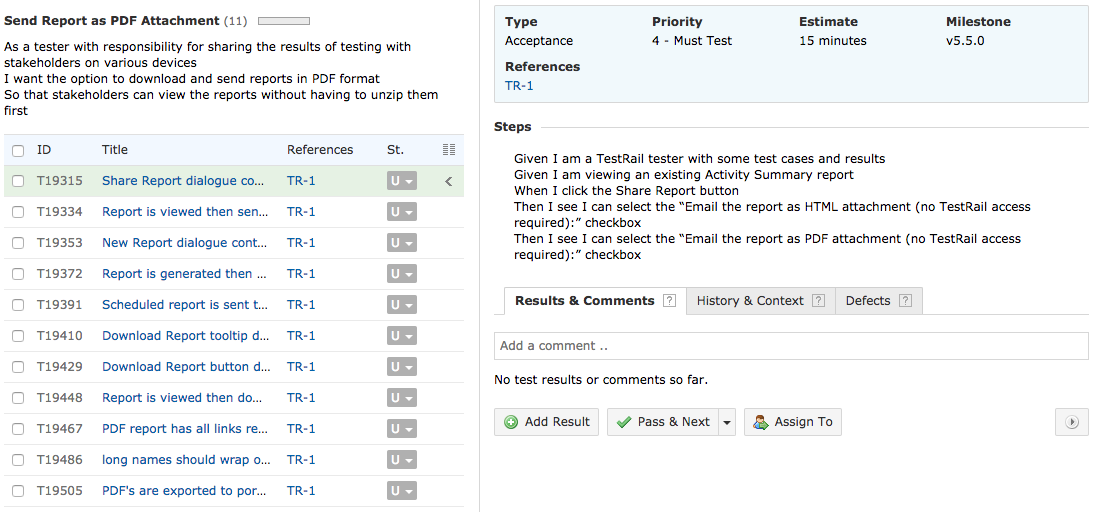As part of our increasingly regular series of webinars, we had the pleasure of welcoming Jeff Langr yesterday who shared a wealth of insights into how teams can achieve the benefits BDD is intended to deliver.
Jeff has a wealth of experience in the software development industry, with a 30yr+ career developing and delivering software primarily using agile approaches and subsequently teaching others to do the same via his company Langr Software Solutions Inc.
In addition to his busy development, coaching and training schedule, Jeff has somehow found the time to write and contribute to a number of books – including Uncle Bob’s Clean Code, and he’s also on the technical advisory board for the Pragmatic Bookshelf.
Get TestRail FREE for 30 days!
BDD Testing Skills
Amongst other things, during the webinar we talked about:
- The background and history of BDD – how we got to where we are now
- BDD as a tool for facilitating conversations and better collaboration
- Some of the benefits of using BDD and how best to achieve them
- The pitfalls and challenges that come along with implementing BDD, and how to include it as part of a broader testing strategy
As you’d expect, we also had a few questions. One of the main ones being, “how do you do BDD in TestRail?” Being a fairly keen BDD practitioner myself, the short answer is “any way you like!” since TestRail is flexible enough to be configured to cater for your own specific needs. My normal approach to writing BDD’s in TestRail is simply to use the free text Steps field, like in the image below (TestRail 5.5 spoiler alert!)
But, some of our community members have gone so far as to prettify the Gherkin syntax with custom UI scripts, as well as to implement automation frameworks where their BDD’s have been glued to some code.
You can find much more information about how teams have used BDD with TestRail in our forum, and a wealth of articles with tips and strategies for successful BDD implementation on our blog. You can also go and download an entire Ebook we prepared on the subject here.
If you don’t find exactly what you’re looking for in the resources above, please do feel free to reach out via the forum, or in the comments area for this article.
Join 34,000 subscribers and receive carefully researched and popular article on software testing and QA. Top resources on becoming a better tester, learning new tools and building a team.

The Video
If you didn’t manage to get along to the webinar, you can find the video below.




